Matador Network's Blog, page 1236
October 22, 2018
Panorama of Eiffel Tower gone wrong
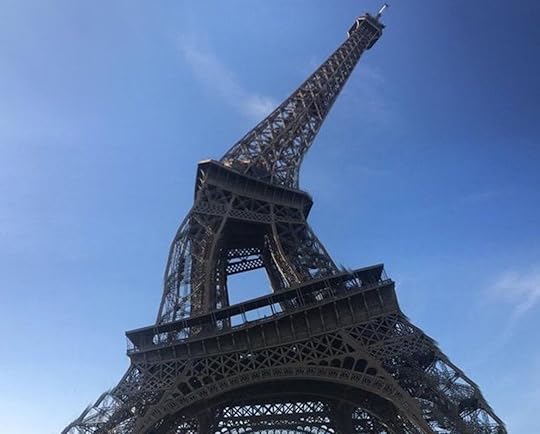
If you’ve ever wondered what the Eiffel Tower might look like if it came to life and drank far too much wine (or absinthe), this photo should give you an idea. Jean-Philippe Dumais, a tourist from Quebec, recently attempted to take a panoramic shot of Paris’ famous landmark that resulted in this Dalí-esque distortion of the tower.
Tried to take a panoramic picture of the Eiffel Tower today, it went surprisingly well! from r/pics
Dumais posted the picture on
H/T: Fox News

More like this: 7 lesser-known Parisian architectural wonders you can check out for free
The post Tourist captures “drunk” Eiffel Tower photo in panoramic shot gone wrong appeared first on Matador Network.

The 9 most colorful neighborhoods in the world
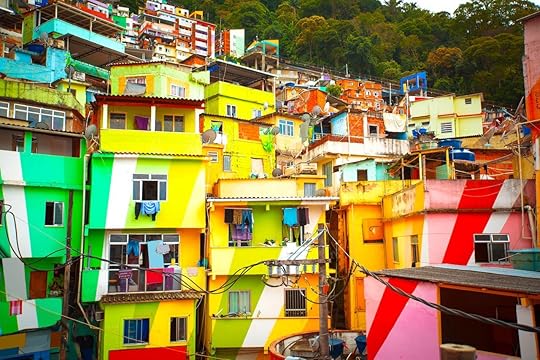
Neutral tones are nice and all, but reaching for a neon or pastel paint can is a surefire way to transform an ordinary structure into a living canvas — just ask these nine dynamic neighborhoods around the world. From a landmark quarter in Turkey to a recently renovated community in South Korea, the following photogenic settlements have taken house painting to a whole new level, proving just how much of a difference a splash of color — or several — can make.
1. Bo-Kaap — Cape Town, South Africa
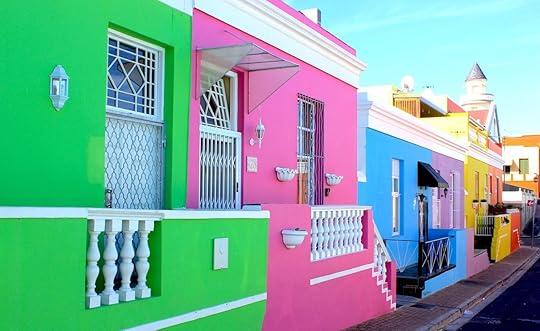
Photo: Janet Newenham/Shutterstock
Formerly known as the Malay Quarter, this vibrant neighborhood overlooks downtown Cape Town at the foot of Signal Hill, a brilliant display of Georgian and Cape Dutch architecture painted every shade imaginable. Its winding streets are some of the oldest in the entire city; the oldest among them, Wale Street, hosts the must-see Bo-Kaap Museum, which delves into the Cape Malay culture and Islamic heritage on which the community was built.
2. Balat — Istanbul, Turkey
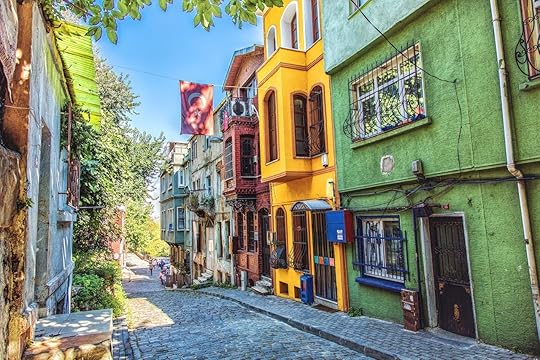
Photo: Lepneva Irina/Shutterstock
The old Jewish Quarter in Istanbul is a whirlwind of colorful architecture where bright pink buildings neighbor electric blue structures. Meander down labyrinthine lanes, discovering Greek Orthodox churches and grand mosques around the corner from artsy, easygoing cafes selling Turkish coffee and local delicacies. Balat and neighboring Fener on the western bank of the Golden Horn might just be the best places to wander aimlessly in all of Istanbul.
3. La Boca — Buenos Aires, Argentina

Photo: Jess Kraft/Shutterstock
La Boca is colorful in more ways than one. Tango music pulses down streets lined with brightly colored buildings, outside of which pickup soccer games are a frequent occurrence. The blue-collar neighborhood has become something of a tourist hotspot with art vendors and cafes on every corner, welcoming out-of-towners without compromising its local flair. Caminito is the beating heart of La Boca, a lively street turned open-air museum filled with lunch and dinner spots that are as well-known for their dance shows as they are for their edible offerings.
4. Punda — Willemstad, Curaçao
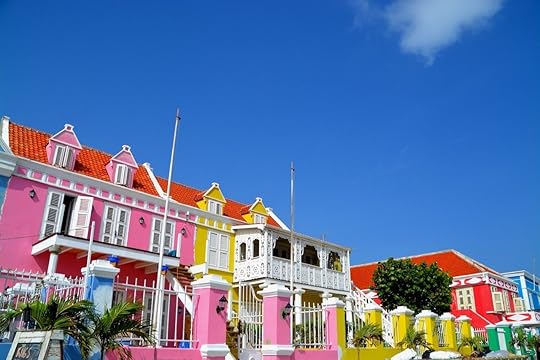
Photo: Styve Reineck/Shutterstock
Punda is one of four quarters that make up the historic center of Willemstad. It’s also the most likely to be featured on a postcard thanks to the Handelskade, a waterfront stretch on the Sint Anna Bay whose colorful properties are more vivid than a box of crayons. The district is home to some of the best dining and shopping on the entire island, as well as an arts scene that will keep visitors very busy. For the best view of the harborfront, snap a photo from the Queen Emma Pontoon Bridge and rake in those Insta likes.
5. Kampung Pelangi — Randusari, Indonesia
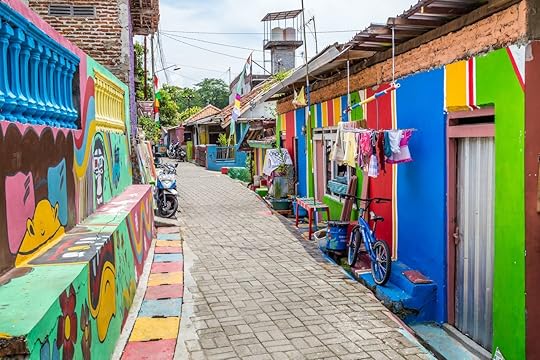
Photo: HildaWeges Photography/Shutterstock
Aptly nicknamed Rainbow Village, this neighborhood in Central Java was painted top to bottom in bright pastels in 2017 in an effort to draw tourism, a hugely successful campaign if social media is anything to go by. Everything from tiled roofs and exterior walls to stairways and handrails are now striped pink, purple, yellow, orange, red, blue, and green. Intricate street art fills the spaces between swaths of paint, leaving very little of the once drab settlement unpainted.
6. Burano — Venetian Lagoon, Italy
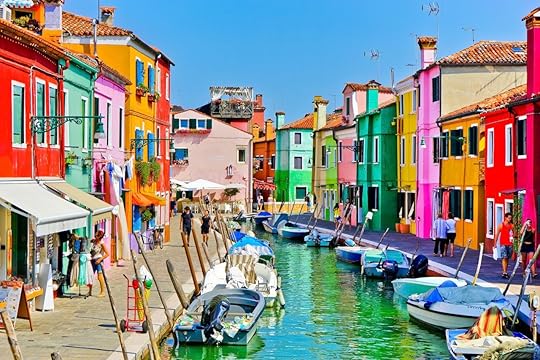
Photo: Javen/Shutterstock
Burano is one of the best reasons to visit Venice outside of its iconic canals and historic plazas. Legend has it that the vivid homes peppering the island were painted to help resident fisherman navigate the waterways on even the greyest of days. No two paint jobs are exactly alike, each more colorful than the next, and behind several lie some of the best seafood spots around. You can visit Burano by way of an easy ferry or water taxi ride from Venice in around 45 minutes.
7. Santa Marta — Rio de Janiero, Brazil

Photo: Skreidzeleu/Shutterstock
You’ll find every color on the spectrum in this hillside favela, in many cases on the facade of a single structure. Santa Marta was first made famous by Michael Jackson after part of the music video for “They Don’t Care About Us” was filmed in the neighborhood. Now known for being the first pacified favela in Rio, Santa Marta draws visitors with its vibrant coloring, which was spearheaded by two Dutch artists who transformed its dilapidated structures into works of art. It’s worth seeing up close, but you should arrange to go with a guide just to be safe.
8. Haight Ashbury — San Francisco, California

Photo: Michael Warwick/Shutterstock
Tie-dye tapestries aren’t the only polychromatic icons of Haight Ashbury, San Francisco’s famous hippie haven. Brightly colored Edwardian and Victorian houses known locally as Painted Ladies can be found throughout the neighborhood, the best known of the bunch being a string of harlequin row houses between Steiner and Hayes Street near Alamo Square. Between gables, window and door trims, and other bright accents, several hues are represented on each Painted Lady, making the Haight one of the most colorful neighborhoods not just in SF but also the US at large.
9. Gamcheon — Busan, South Korea
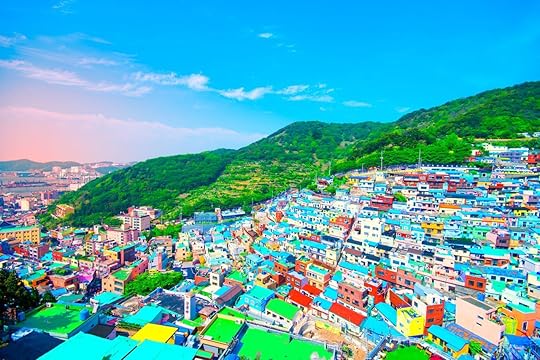
Photo: SAENPHOTO/Shutterstock
Steep, narrow streets wind through the Gamcheon Culture Village in Busan. The historical refugee neighborhood was renovated and given a fresh coat of paint in 2009 to lift local spirits, and it’s been a cultural and artistic hub on the South Korean coast ever since. Kaleidoscopic structures mingle with vibrant murals, decorating everything from alley walls to stairways. There are also tons of cafes and small art galleries to keep visitors entertained while they explore. 

More like this: The 9 most colorful towns around the world you’ve never heard of
The post The 9 most colorful neighborhoods in the world appeared first on Matador Network.

Woman just cycled around the world
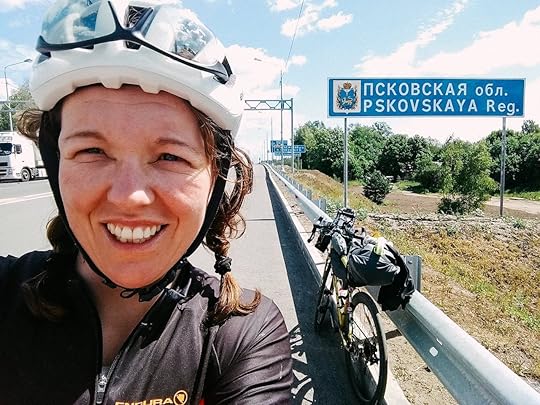
38-year-old Scottish cyclist Jenny Graham shattered Paola Gianotti’s previous world record of 144 days on Thursday, when she completed her epic journey around the world by bicycle in just 124 days, 10 hours, and less than 50 minutes. Leaving from Berlin, she rode for 18,000 miles east across Asia, south through Australia and New Zealand, then traveled to Alaska for a trip across Canada and the US, and finally returning to Berlin from Portugal. A map of her entire route can be found here.
View this post on InstagramA post shared by Jenny (@jennygrahamis_) on Jul 29, 2018 at 9:26pm PDT
According to Guinness World Records, to qualify for the record a “rider must travel the same distance as the circumference of the Earth — 24,900 miles — in one direction, starting and finishing in the same place. Travel by sea and air is allowed, but at least 18,000 miles of the route must be cycled.”
View this post on InstagramA post shared by Jenny (@jennygrahamis_) on Jul 12, 2018 at 10:49pm PDT
On the journey, Graham traveled through over a dozen countries while carrying her own gear, and had to deal with worn-out equipment, flat tires, fatigue, and a host of other environmental factors. In true Forrest Gump fashion, many strangers joined her on the ride, and she was often greeted by locals cheering her on, or offering food and shelter. Indeed, food was incredibly important, as she needed to consume approximately 660,000 total calories to maintain enough energy to cover 180 miles a day as planned.
View this post on InstagramA post shared by Jenny (@jennygrahamis_) on Jun 27, 2018 at 1:49pm PDT
Graham is now set to become the fastest female rider to ever circle the planet, pending an official review. To view photos she took along the way, check out her Instagram account, and get an inside glimpse into the adventure with this weekly diary she filed for the BBC. 
H/T: NPR

More like this: 7 US cities that are best explored by bike
The post This cyclist just became the fastest woman to ever cycle around the world appeared first on Matador Network.

Signs you’re back in Wisconsin
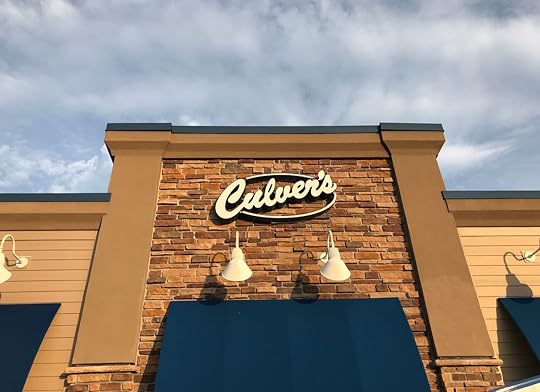
Whether you call it America’s Dairyland, the Badger State, or Wisco, the accent, food, and activities create a culture unique to Wisconsin that keeps a hold on us. When we do go back home for a family reunion, a friend’s wedding, or just a visit, we know we’re back home in Wisconsin with these 14 signs.
1. You stop at the nearest Culver’s immediately upon exiting the airport.
The bright blue of the awning, booths, and spoons are a sure sign of Culver’s deliciousness. You order a ButterBurger, a root beer, the flavor-of-the-day dessert, and swap your fries for cheese curds.
2. Your bag is pronounced bay-g.
Elongated vowels and a touch of nasal signals that you’re back home.
3. The mosquitoes are huge.
If it’s spring, summer, or early fall, you better have some spray on hand — and some hydrocortisone.
4. Sportswear is everywhere.
Whether it’s Badger red or Packers green and gold, T-shirts, hats, and sweatshirts emblazoned with our favorite team’s logo are always trending, even in the off-season.
5. You’ll hear “How ’bout them Packers?” everywhere you go.
It also comes in handy if you need to change the conversation topic or you bump into an ex in the market.
6. You can call them “bubblers,” “tennis shoes,” and “stop ‘n go lights.”
No need to explain yourself here. Embrace the unique vocab you grew up with.
7. Oh, and “blinker.”
Obviously, FIBs don’t even know what those are.
8. Every meal incorporates cheese.
I’m looking at you, broccoli and cauliflower.
9. When you want to wind down after partying, you switch to beer.
Miller Lite = water after 12:00 AM.
10. Until the snow flies, it’s shorts weather.
There’s always that one guy in shorts, sandals, and a beer in hand, even when it’s 40 degrees out.
11. You hear Harley-Davidsons everywhere.
Rev those engines.
12. Weekends away are spent up north.
You’ll stay in a cabin by the lake, with a boat, and most meals will be cooked outdoors. Up north isn’t a place, it’s a state of mind.
13. You’re eating casserole and it’s delicious.
And there’s definitely a can of creamed soup in there.
14. That road is still under construction.
The endless strips of orange barrels are kind of comforting, right? At least you know some things never change. 

More like this: 16 foods Wisconsinites crave when they’re away from home
The post 14 signs you’re back home in Wisconsin appeared first on Matador Network.

Find couple in proposal photo
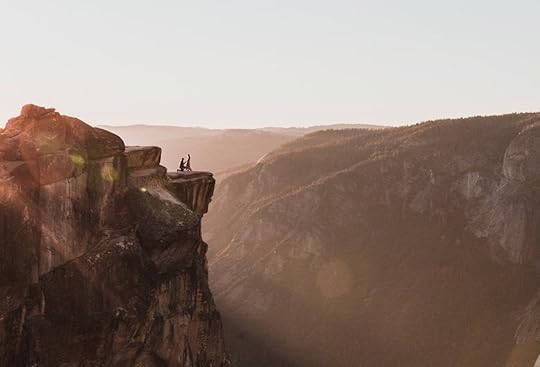
On October 6th, freelance photographer Matthew Dippel was taking photos of his friend against Yosemite National Park’s dramatic cliffs, when he noticed a couple in the distance in the midst of a proposal. Now, the photographer is on the hunt for their identity.
He was waiting for his friend to appear on the 3,500-foot drop ledge known as Taft Point, but the couple stepped out first. “I had everything all ready to go on my camera,” he told BBC News, “so I just had to snap away…I was just in the right place at the right time.” He also noted that there were no other photographers present to capture the moment. Once he had finished his photoshoot, Dippel hurried to find the couple and show them the picture, but they were gone.
Twitter help, idk who these two are but I hope this finds them. I took this at Taft Point at Yosemite National Park, on October 6th, 2018. pic.twitter.com/Rdzy0QqFbY
— Matthew Dippel (@DippelMatt) October 17, 2018
Dippel posted the photo online in an effort to identify the newly-engaged couple. No one has come forward yet, but the picture has received hundreds of thousands of likes. “I just genuinely wanted to find out who the people were to deliver this photo to them,” Dippel said, “because I think it’s a super special moment that they could hold on to.” While some have questioned the photo’s validity, suggesting it may be staged, Dippel insists that’s not the case at all. “I’m just trying to figure out who they are,” he said.
Although Taft Point might look somewhat precipitous, it’s actually pretty easy to reach. According to the park’s website, it’s only a 2.2 mile round trip from the Glacier Park Road, where you can park your car. The spot has proven to be an incredibly popular Instagram backdrop for engagement and weddings shoots.
The couple in question still hasn’t come forward, but Dippel is hopeful that his photo’s widespread popularity will expedite the process. “It continues to gain attention and hopefully it’ll find them,” he said. “I’m honestly surprised it hasn’t already!” 
H/T: BBC News

More like this: The 10 most cliche places to propose (and where to propose instead)
The post Help find the mystery couple in this breathtaking proposal photo appeared first on Matador Network.

Jail for two after vandalization

It should go without saying that going around vandalizing 800-year-old walls will get you in trouble, but it seems like these tourists had no clue. 23-years-olds Brittany Schneider, a Canadian national, and Furlong Lee, from the UK, were caught spray painting graffiti on the Tha Phae Gate, part of a 13th-century fortress in Chiang Mai, Thailand, and are now being held at the provincial court. If found guilty, they could face up to 10 years in prison and a fine of $30,500.
Schneider’s mother recounted the panicked phone call she received from her daughter. “Mom, I’m in trouble,” her daughter told her, according to CBC News. “I spray painted an ancient wall and I’m going to prison.” Lee’s mother told the Telegraph that she’s “devastated it’s happened in a historic place…I would also apologize to everyone he’s offended. That’s not how he was brought up but he’s done a stupid thing.” Further complicating matters for the two tourists, the whole incident was caught on camera.
In a telephone interview with the Telegraph, Lee said of his actions, “I’d had some bad news from my family and I went out drinking. I mean, I was really, really drunk.”
In support of her daughter, Schneider’s mother said Brittany “made a mistake: this is out of character for her…she has to face it. She’s sorry for what she’s done. But I say stay strong and breathe and go through it.”
The graffiti was cleaned up, but the consequence of this act of vandalism remains the same. Lee’s passport has been revoked in advance of a court hearing in two weeks. While Brittany Schneider will be released on bail Monday, she will have to remain in Thailand until her trial, which may not take place for two months. Her mother plans to fly to Thailand to be by her side. 
H/T: CBC News

More like this: The 7 most amazing temples in Thailand outside of Bangkok
The post Tourists face 10 years in prison in Thailand after vandalizing an ancient wall appeared first on Matador Network.

Grevy’s zebras are in danger

The Grevy’s zebra is in trouble. The animals, found only in Kenya and Ethiopia (they’re now extinct in Somalia and Sudan), have seen their numbers plummet over the years; from around 15,000 in the 1970s to only 2,812 known left today. In August 2018, adventure photographer Andrew Peacock traveled to the West Gate Community Conservancy in the Samburu ethnic region of Kenya to document the work of the Grevy’s Zebra Trust, an independent Kenyan wildlife conservation trust that’s actively working with conservancies and communities within the Grevy’s habitat area to ensure the survival of this special zebra species. 

1
Two species of zebra cohabit in Kenya and Ethiopia: the Grevy’s zebra and the plains zebra. As visible in the picture above, the two species have physical differences that make it easy to distinguish them. The Grevy’s zebra is taller and has narrower stripes than the plains zebra. It also has a white belly, a black dorsal stripe, large rounded ears, and a brown muzzle. The Grevy’s zebra is officially listed as an endangered species by the International Union for Conservation of Nature.

2
A primary threat to the species is land degradation from the overgrazing of livestock. Overgrazing is not about too many animals grazing in an area, rather, it’s when an area that has been grazed has not had time to recover before being exposed to grazing animals again.

3
Because of the land degradation, the distance between available grazing areas and water for the zebras has increased, so Grevy's mares are forced to make long and more frequent journeys to drink, resulting in high foal mortality. Repeated droughts in East Africa in recent years have only added to the environmental pressures on the survival of this species.
Intermission
Travel
The 25 coolest towns in America: 2018
Matador Team
Sep 25, 2018
The 7 most amazing wildlife experiences in Madagascar
Ali Wunderman
Oct 17, 2018
Culture
The Pantanal in Brazil is the best wildlife-watching spot in South America
Margarita Steinhardt
Oct 15, 2018
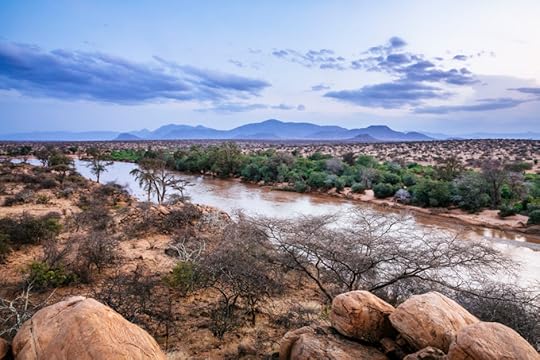
4
This section of land around the Ewaso Nyiro River in Kenya’s West Gate Community Conservancy is a core area for the conservation of the Grevy’s zebra. Although there is no grass on the banks of the river because of regular floodings and large animals visiting, there is good grassland closeby where livestock don’t graze, making this area very safe for the zebras.

5
The conservancies who work with the Grevy’s Zebra Trust aim to increase community engagement in wildlife protection while finding new ways to maintain the indigenous population’s pastoral way of life.

6
Involving the people who live in the Grevy’s habitat area in the conservation process includes educating the next generation of land managers about herding techniques and the issues of grassland degradation. Young “Grassland Warriors” are also taught to recognize when herders are not sticking to agreed boundaries for livestock grazing and to report this to the Grevy’s Zebra Trust.
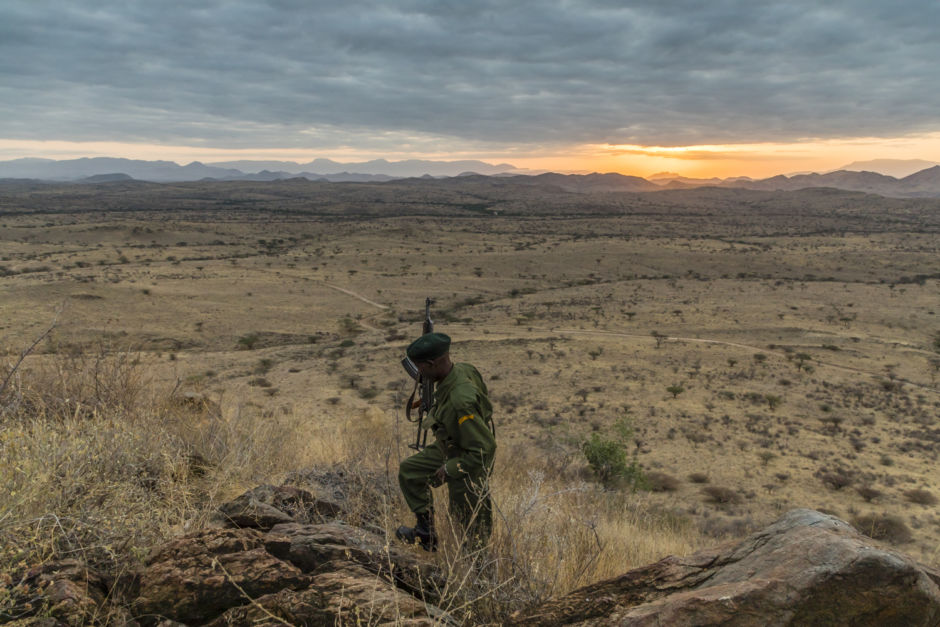
7
The Grevy’s Zebra Trust employs 14 Grevy’s Zebra Ambassadors and two radio operators from 8 communities. The Grevy’s Zebra Ambassadors monitor the plains to protect the species from being hunted for its meat and act as conservation messengers and peacekeepers between ethnic groups.

8
The Grevy’s Zebra Trust works with warriors from the Samburu tribe to survey the Grevy’s zebra population, protect them from poachers, and provide communities in the area with practical tips on how to participate in the conservation effort.

9
One of the conservation actions Samburu warriors teach community members is water management. Grevy’s zebras have limited access to water in the dry season and a few simple actions, including constructing troughs, digging shallow wells, and filling temporary troughs at wells that are too deep for Grevy’s zebras to access, can go a long way in helping the species thrive.
Intermission
News
Attention female photographers: Sony wants to give you a $25,000 grant and free gear
Eben Diskin
Sep 21, 2018
Lifestyle
The most outrageous luxury spa experiences in Africa
Zibby Wilder
Aug 1, 2018
Culture
11 overrun destinations that are trying to curb tourism
Stephanie Gupana
May 16, 2018

10
Data about zebra sightings collected by Ambassadors and warriors is entered into a bespoke smartphone app provided by the Grevy’s Zebra Trust. It allows those in the field observing the animals to enter information instantly.

11
The data gathered is then downloaded by an environmental scientist. The data helps conservationists keep track of the well-being of the Grevy’s zebra population.

12
The Grevy’s Zebra Trust has made tremendous improvements for the health of the species. For example, since the start of the Grevy’s Zebra Ambassadors program five years ago, poaching of the Grevy’s zebra for subsistence meat by locals has ceased - but poaching from outsiders still exists. There has also been significant regrowth of grassland in the Naibelibeli plains thanks to the clearing of Acacia Reficiens overgrowth, which is a consequence of overgrazing. Finally, the significant increase in community awareness about the endangered status of the Grevy’s zebra has brought forth understanding that there are ways for livestock and Grevy's to exist side-by-side with careful land management.
For more images by Andrew Peacock, check out his Instagram profile.

More like this: BRINK: On the Front Lines of Conservation
The post Saving Africa’s Grevy’s zebra from extinction appeared first on Matador Network.

October 19, 2018
Horseback riding in South America
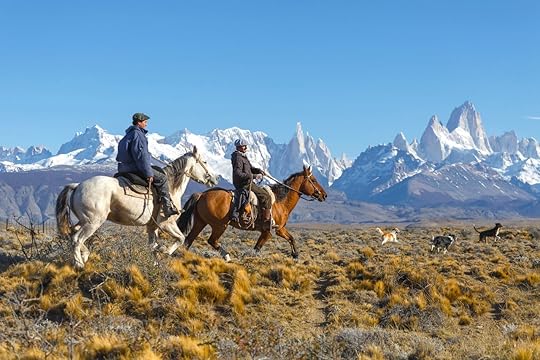
Since Europeans first brought horses to South America over five centuries ago, horses have become an integral part of South American culture. From the legendary gauchos of Uruguay and southern Brazil to the estancia lifestyle of Chile’s Patagonian ranches and the world’s best polo players in Argentina, horse culture has a treasured place in the hearts of people in this part of the world. To really understand the countries of South America, you should get to know them through their horses. From seeking out wild steeds while on horseback to galloping along endless beaches, these are the best horseback-riding experiences in South America.
1. Saddle up the Estancia La Peninsula in Chile.
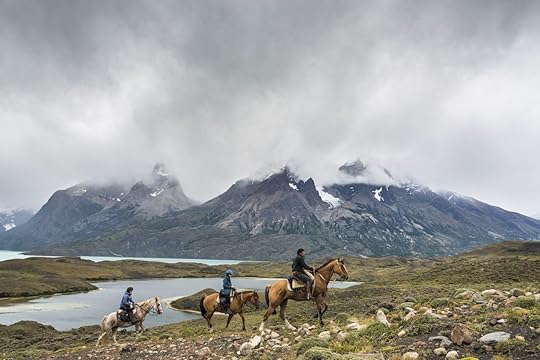
Photo: Sergey Didenko/Shutterstock
In the 1800s, the wide open pampas in Chilean Patagonia became very popular for sheep farming, giving rise to the region’s baqueano cowboy culture in which poncho-wearing men with sun-darkened skin would ride around Western-style on horses, rounding up large herds of sheep. The lifestyle and traditions are still deeply entrenched in Patagonian culture, and one of the best places to get a glimpse of this lifestyle is at Estancia La Peninsula, a historic ranch located about half an hour from the frontier town of Puerto Natales.
The horses that live there are of the Criollo breed descended from steeds brought by Spanish conquistadors, and they’re famous for their endurance and stamina. Multi-day horseback-riding trips take you through the mountains and pampas of Last Hope Sound, where you’ll take in incredible views of mountains, glaciers, lakes, and plains. A day trip, on the other hand, includes a horseback ride around the grounds, a sheep-shearing demonstration, and an authentic Patagonian barbecue. The horses used are gentle as they’ve been brought to La Peninsula for peaceful retirement after working on other estancias, or cattle ranches.
2. Go seeking the wild horses of Torres del Paine in Chile.
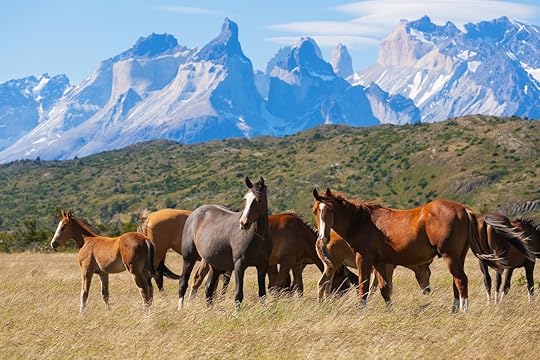
Photo: sunsinger/Shutterstock
These small herds are descendants of horses that escaped from Spanish explorers, and they still roam the backcountry around Torres del Paine National Park. They can be hard to find, but trackers in the area know what to look for and how to find them. Saddle up with a guide who will lead you through the back areas of the park, and you’ll see beautiful views of the Paine Massif, interesting flora and fauna, and, if you’re lucky, the wild horses themselves.
3. Learn to play polo in Argentina.

Photo: Argentina Polo Day/Facebook
Argentina doesn’t just produce legendary soccer stars like Diego Maradona and Lionel Messi. It’s also home to the best polo players in the world with nine of the world’s top 10 polo players hailing from Argentina. Although you could take in a polo match while sipping on an Aperol Spritz at any of Buenos Aires’s fine polo clubs, it’s best to get in the saddle and try it yourself.
Through Argentina Polo Day, jointly offered throughout the year by two estancias outside the city, you can spend a day learning the art of polo. The program starts with a lecture about the history of polo and explanations about the rules, equipment, and horses. After watching a quick game to see all in action and getting acquainted with your assigned horse, the instructor gives you a polo lesson followed by a mini-match, during which you and other novices get to play together.
4. Visit the Estancia Los Potreros in Argentina.
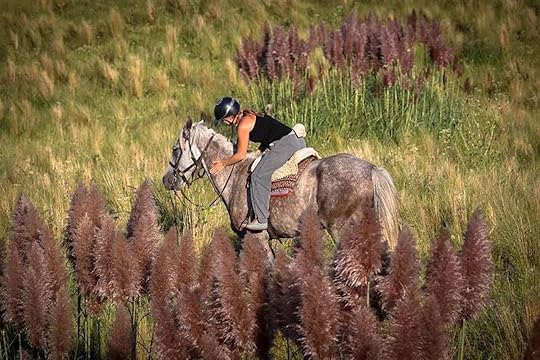
Photo: Estancia Los Potreros/Facebook
After getting to know the high-society pomp of playing polo, it’s time to head out to the countryside to experience the other lifestyle in Argentina that revolves around horses: being a gaucho, or cowboy, and living on a traditional estancia.
The ranches in southern Patagonia are more famous, but in the beautiful north and central regions of Argentina, they’re just as prolific and culturally influential. In Cordoba, Los Potreros Estancia is a stately working ranch that keeps sheep and cattle where guests can work alongside the gauchos on tasks like rounding up cattle, partaking in gaucho horse games and races, or just going for rides out in the beautiful countryside. Los Potreros has a herd of more than 130 well-trained and impeccably bred horses, including criollos and Peruvian Pasos, which are famous for their smooth, rhythmic gait. The countryside around the estancia is lush with sweeping plains, valleys, and rivers, and you feel like a genuine cowboy while out there riding on these well-mannered and award-winning horses.
5. Live the gaucho life at the Panagea Estancia in Uruguay.
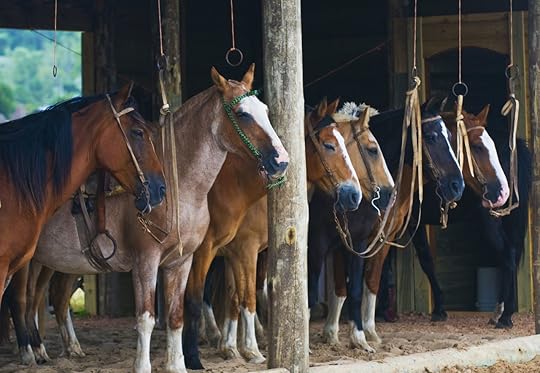
Photo: Kobby Dagan/Shutterstock
Many of the estancias throughout South America are very elegant, built and operated as they were by wealthy landowners. To stay viable today, many now cater to moneyed tourists with upscale stays and day trips. And while these estates are lovely, they’re also expensive. For a taste of the real nitty, gritty estancia life, the Panagea Estancia backpacker hostel and working ranch in northern Uruguay is the place to go.
There’s no lounging on the veranda here. You work and experience real gaucho life, living on your horse all day, receiving three simple meals, and bunking down dorm-style in basic but cozy accommodations. You’re invited to participate in all the workings of the ranch, trying out standard farm chores like feeding and grooming, learning how to properly herd cattle, and learning how to horseback ride properly. The estancia promises that you’ll be working on horseback every day with its herd of working horses. And when you get to go out on rides, the views are enchanting: The waving grassy plains of the Uruguayan pampas stretches off to the horizon.
6. Ride along the Atlantic Coast in Uruguay.
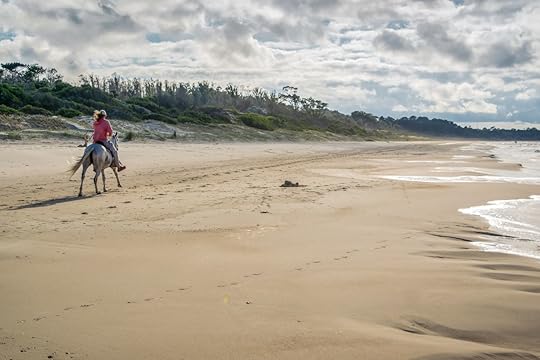
Photo: ernestovdp/Shutterstock
The coast of Uruguay is a virtually unbroken stretch of sun and sand — perfect for a day of cantering. A great place to start is at Punta Diablo, a small fishing town that has lovely curving beaches and fine weather. From there, you can horseback ride along the beach down to the town of Cabo Polonia and its accompanying national park, which has gorgeous ocean views and sand dunes to ride through. You’ll likely see marine life like sea lions, frogs, many different kinds of birds, and, if you’re lucky, migrating southern right whales.
Various tour companies in the area can do day trips. Another option offered by Ride World Wide, a tour operator dedicated to only horseback-oriented trips, is a tour that includes several days of riding down the beaches mentioned above, ending in the town of Castillo further down the coast from Cabo Polonia. If galloping on a horse along a sandy beach with the salty wind in your hair and the sun on your face is your idea of paradise, pay a visit to the Uruguayan coast. And since Uruguay gets fewer tourists than some other South American destinations, a peaceful experience without a huge crowd is a given.
7. Go riding through the Pantanal in Brazil.
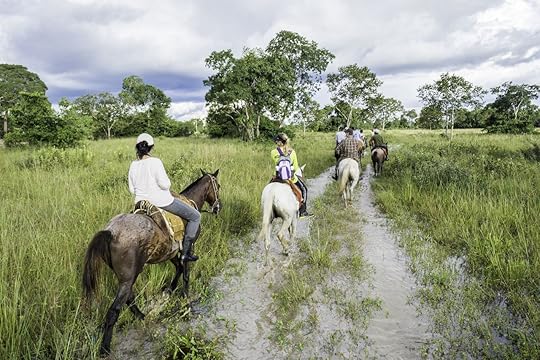
Photo: Filipe Frazao/Shutterstock
Horses and the culture around them are a big deal in Brazil. The country has a storied and honored cowboy culture, and Brazilian horses — like the country’s national horse, the Mangalarga — are renowned for their breeding. Among the many horse-related activities you can do in Brazil is riding through the gorgeous Pantanal.
The Pantanal, located in the state of Mato Grosso do Sul, is the world’s largest tropical wetland, with rivers, estuaries, marshes, and grassy lands stretching off in all directions. It’s a great place to see native wildlife like tapirs, capybara, and, if you’re really lucky, jaguars. Exploring the area on horseback is a fantastic way to take in the scenery and keep an eye out for interesting animals. Gaucho do Brasil is one of the companies that offer horseback riding tours in the Pantanal and elsewhere in Brazil. 

More like this: 10 things you need to know before visiting Patagonia
The post The 7 best horseback-riding experiences in South America appeared first on Matador Network.

Red tide is sweeping Florida beaches
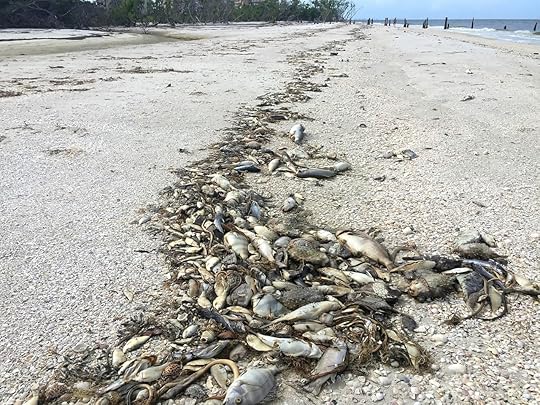
The Breakers in Palm Beach sounded more like a retirement home TV room in Boca.
Hacking coughs and wet sneezes interrupted the waves crashing against the iconic hotel’s shuttered, empty beach. Guests rubbed their eyes and made uncomfortable faces until the irritation got to be too much. A few sought relief in the swimming pool. Most just went inside to the HMF Bar.
“Red tide,” a towel attendant told me. “Nobody’s been out here all week. Sucks.”
While a closed beach at a luxury hotel is indeed a tragedy, it pales in comparison to the scene at other Florida beaches this summer. The red tide that’s been creeping through the west coast of Florida has left beaches littered with dead fish rotting in the summer heat. A smattering of eels, sea turtles, and other dead marine life taking up the beach space usually occupied by vacationing Europeans. Pictures of this ugliness were common along the Gulf Coast this summer, but in October, the red tide began creeping around to Florida’s east coast, causing beach closures from Miami up to Palm Beach and recently into the Indian River and Brevard Counties.
As inviting as respiratory irritation and the stench of dead fish might be, it doesn’t exactly scream “tropical vacation.”
So what, exactly, is this scourge of the water that’s closing the nation’s most popular beaches? And, more importantly, what does it mean for people planning a vacation to Florida? Here’s a quick primer on red tide and how it might affect your trip to Florida.
What is red tide anyway?
Red tide is a common term used to describe a harmful algae bloom (HAB). Currently, waters in and around Florida are experiencing an abundance of Karenia brevis algae, which omits a harmful neurotoxin that kills fish and other marine life. It also depletes the ocean of oxygen, making it uninhabitable for a lot of animals. This is why fish are washing up on Florida’s coastline (called a “fish kill”) and the birds eating those fish are dying, too.
The algae turn Florida’s usually turquoise waters a lovely shade of light brown, hence the name “red ride.”
This one started about a year ago off the southwest coast but got particularly nasty between Ft. Myers and Sarasota over the summer. Tropical Storm Gordon brought the algae up to the Panhandle in September, and currents have spread it to the east coast this month. Though the size of the bloom varies by day, it’s the largest red tide the state has seen since 2005.
How harmful is the red tide for people?
A state largely dependent on beach tourism isn’t closing its beaches for no reason. So, yeah, it’s harmful. Though the red tide won’t kill people like it does fish, getting it on your skin can cause severe irritation to the eyes and skin, plus nasty rashes.
Even being near the water can be harmful as the force of crashing waves breaks open the algae, releasing the neurotoxins into the air. Those toxins are why guests by The Breakers’ pool were coughing, sneezing, and rubbing their eyes. People with respiratory problems or severe asthma have been advised to stay away from the ocean altogether during red tides as they’re particularly susceptible to the toxins.
What caused this red tide?
Scientists haven’t pinned down a specific cause of this bloom, and since red tides have been documented all the way back to the days of Spanish exploration, it’s hard to say. This particular bloom started earlier in the year than usual and doesn’t seem to be going away. Environmental groups point to overdevelopment, agricultural runoff, redirection of water from Lake Okeechobee, and other man-made factors as the cause of the bloom.
Others call it a result of Governor Rick Scott’s closing water-quality testing centers, earning him the election-year-nickname Red Tide Rick. Others say it’s a result of climate change or a cyclical part of the unique Florida ecosystem. Whatever the cause, it’s an environmental catastrophe that the state is scrambling to clean up.
How long is it going to last?
Nobody knows. There were hopes that Hurricane Michael might break up the red tide, but that didn’t happen. Blooms can last anywhere from a few weeks to years, depending on water conditions. Everything from sunlight to wind and water currents affect how long the algae can thrive. Even scientists from the National Oceanic and Atmospheric Administration can’t put a guess on it.

Photo: LagunaticPhoto/Shutterstock
Will the beaches be closed when I go to Florida? And full of dead fish?
Maybe. The tide has been hanging around the Gulf Coast for a while, and your chances are worse there. The red tide creeping up the east coast has already left Southeast Florida, moving up near Titusville and Melbourne with a small strand now sneaking down into the Keys. So your destination may have red tide now but not when you get there. Or vice versa. Your best bet is to follow the NOAA’s conditions reports and red tide forecasts like you would a weather report. That way you’ll be prepared for what’s coming and can plan some fun trips to the outlet mall if the beaches are closed.
What about fishing and watersports? Can I still do those?
With sick fish in the water, fishing near the coast is going to be a bad idea. Best case scenario you spend the whole day sneezing and don’t catch any fish because there are none in the water. Some charters can take you outside the red tide, further out into the Gulf of Mexico or the Atlantic Ocean. Marine life out that far may still be affected by the red tide, so eating the fish you catch is a risk you’ll have to measure. Filter-feeding shellfish like oysters and clams can get red tide toxin buildup, which can give you Neurotoxic Shellfish Poisoning if you eat them. So while your mahi-mahi might be fine, avoid Florida filter feeders for a while.
Is Florida doing anything to clean it up?
Of course. Governor Scott recently allocated $13 million to local governments to help facilitate cleanup efforts, though not much has changed thus far.
So should I plan a Florida vacation this year or wait until the red tide is gone?
That, friend, is up to you. Florida is a big state with a lot to do other than lay on the beach. Look no further than any “Florida Man” news story for proof of that. There’s Disney World. There are the nightlife and restaurants of Miami. There’s the Everglades and the Florida National Scenic Trail. There’s whatever people do in Bradenton. Basically, there’s no reason the red tide should ruin your Florida vacation, necessarily. It just means you might have to change your itinerary around a little. Though the red tide might not be at your destination now, it could be then. Or not at all. Plan as normal and adapt if you need to. Just realize that if you start sneezing by the pool for no apparent reason, it’s probably time to go inside. 

More like this: Experience the breathtaking bioluminescence of Florida’s coast
The post What Florida’s toxic red tide means for your winter vacation appeared first on Matador Network.

The 7 best US cities to see by bike
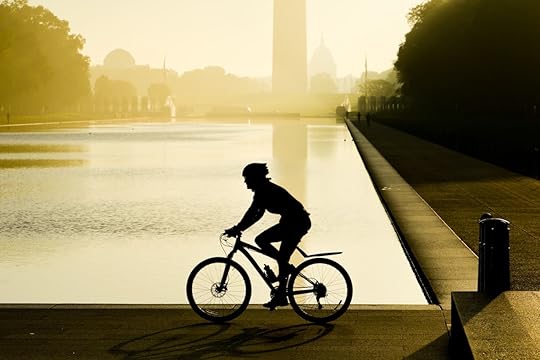
Driving can be a cumbersome way to see a city, what with traffic congestion and expensive parking. And while walking gets you up-close and personal, it’s hard to cover a lot of ground on foot — especially when the places you want to visit are far apart. Touring a city by bike, on the other hand, gives you that closer look while getting you farther in less time. Plus, fantastic cities like Seattle and Washington, DC, are becoming even friendlier to cyclists by adding bike lanes, welcoming bike-share providers, and rethinking traffic to better serve cyclists. So start planning your next active city break at one of these seven US cities that are best explored by bike.
1. Portland, Oregon
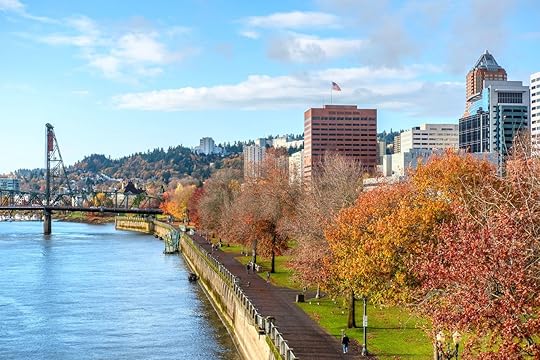
Photo: haveseen/Shutterstock
There’s a reason why Portland has the highest percentage (over seven percent) of commuters who choose to travel by bike. Named a “platinum” bicycle-friendly community by the League of American Bicyclists and the number one bike-friendly city by Bicycling magazine many years running, Portland has over 350 miles of bikeways. These include over 77 miles of neighborhood greenways, 188 miles of bike lanes, and 85 miles of bike paths. Its BikeTown rideshare program has more than 1,000 bikes available across the city — a great option should you choose to join one of the city’s more popular events, the annual World Naked Bike Ride.
Beautiful places to cycle in Portland include riding along the Willamette River and crossing its historic bridges, including the Broadway, Steel, Hawthorne, and Tilikum bridges. You can also ride from the Portland Art Museum to the galleries and shops of the creative Pearl District along NW 10th Avenue. The Alberta Arts District on the east side of town is easy to get around by bike and has some of the hippest shops, restaurants, bars, and art galleries you’ll find in Portland. From there, ride south down Martin Luther King Jr. to the Buckman area for breweries, delicious food, and the super funky Portland Flea.
2. Seattle, Washington
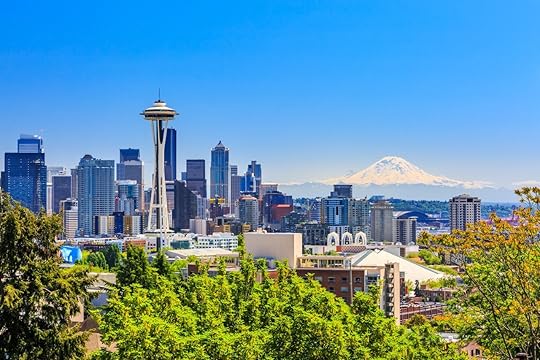
Photo: emperorcosar/Shutterstock
Seattle is as famous for its snow-capped peaks as it is for its terrible traffic, so if you’d like to experience the beauty of the Emerald City, your best bet is to do it by bike. Though hills may prove a challenge to some, they can be worked around with some creative planning. Almost one-third of Seattle residents bike regularly, and there are hundreds of miles of bike lanes, multi-use paths, and trails to choose from. Seattle does not have an official bike-share program, but LimeBike offers about 7,000 bikes available for rent throughout the city.
One great route within the city is the protected (and downhill) bike lane that runs from the Seattle Center to historic Pioneer Square and the International District. A second is the paved ride along the tree-lined shores of Lake Washington to Seward Park. It’s easy to pop your bike onto a Metro bus or the Light Rail any time you get tired or decide you want to explore a different route. In fact, adding public transportation into your bike plans is also a great way to see the sights outside of the city. Popular options include taking the King County Water Taxi from the Seattle waterfront to West Seattle and biking along scenic Alki Beach or riding onto one of the larger car ferries for the 45-minute crossing to cruise Winslow, Bainbridge Island’s charming waterfront town.
3. Chicago, Illinois
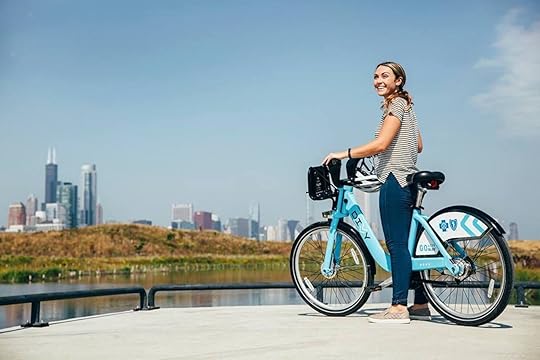
Photo: Divvy Bikes/Facebook
Everything about Chicago seems big — from the buildings to the lake to the pizza slices — but the sights of this city can be made much more manageable by bike. Chicago currently has more than 200 miles of on-street, protected, buffered, and shared bike lanes, in addition to miles of off-street paths. So, for many, it’s easier to get around on two wheels than it is on public transit. The city’s Divvy bike share has 580 stations across Chicago and Oak Park, including heavily trafficked tourist spots such as the Navy Pier, Shedd Aquarium, and Field Museum.
The most popular bike ride in the city is the 18.5-mile Lakefront Trail. It passes wetlands, sand dunes, beaches, and museums, all the while offering incredible views of the city and Lake Michigan. If you want to discover some of the city’s most vibrant neighborhoods, the 606 is a 2.7-mile elevated trail, formerly a railroad track, which connects the Humboldt Park, Wicker Park, Bucktown, and Logan Square neighborhoods. For more variety, the North Shore Channel Trail heads all the way to Evanston from Lincoln Square. The path is asphalt, limestone, and dirt, and it winds through wilderness areas along both sides of the North Shore Channel and the northern tip of the Chicago River.
4. Denver, Colorado
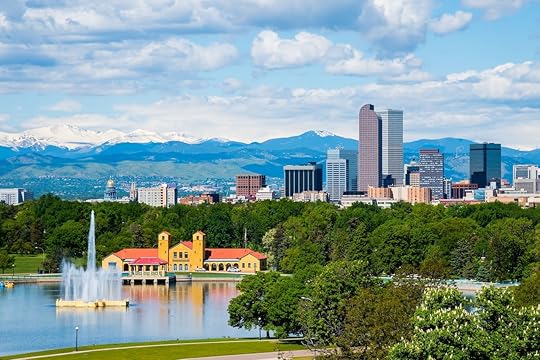
Photo: Andrew Zarivny/Shutterstock
Despite being next door to some of the best skiing on the continent, the mile-high city is actually on a plateau and, in fact, one of the US’s flattest cities. But with those nearby mountains, Denver draws plenty of outdoor lovers, making its residents some of the fittest people in the country. When you combine that flatness with that level of fitness, you’re going to have a lot of people choosing bikes as their primary mode of transportation — and a city tailor-made for exploring by bike. Denver B-Cycle, with its 88 stations, is the leading bike-share option in the city.
Denver’s most famous bike route is the Cherry Creek Trail, which takes you 40 miles from downtown to the Cherry Creek Reservoir. You could ride your bike from one beautiful city park — like Confluence Park, Washington Park, and Huston Lake Park — to another or seek cultural enrichment at the Denver Art Museum instead. Next to the museum, climb the rotunda of the Colorado State Capitol for incredible mountain views. Break up your day of cycling with lunch at one of the city’s many food halls, like Avanti F&B, or one of the eateries inside Denver Union Station. The Station is the hub for Denver’s hip LoDo (Lower Downtown) neighborhood, which is full of cafés and craft breweries. If you didn’t ascend the rotunda at the Capitol, you can opt to see the mountains and fuel up at the same time. An eight-minute ride from Union Station brings you to the Ale House, which has excellent New American food, amazing brews, and some of the best views in the city.
5. New Orleans, Louisiana
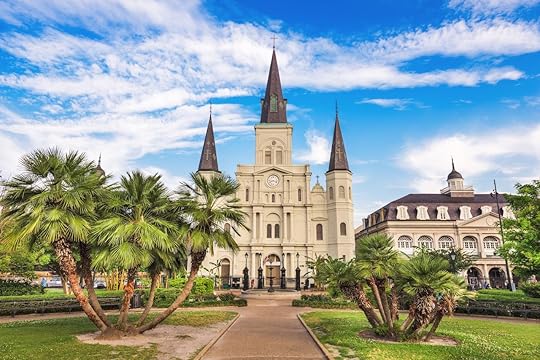
Photo: Sean Pavone/Shutterstock
After Hurricane Katrina, New Orleans jumped on the opportunity to invest in aiding cyclists, boosting its bike lanes from only 11 miles to over 100. It’s now one of the most bicycled cities in the country thanks to that investment, not to mention its gentle topography and pleasant weather. NOLA’s Blue Bikes bike-share program has over 70 stations with 700 bikes, making it easy to cruise everything from the bustling French Quarter to beautiful countryside.
Popular rides from town include the Mississippi River Trail where you can ride for miles atop the levee from Audubon Park to the spillway. The Lafitte Greenway, a green corridor connecting neighborhoods from Armstrong Park to City Park, attracts local and visiting bikers with its paved, car-free paths. Just at the end of the Greenway, stop in at the Parkway Tavern & Bakery for a beer and classic po’ boy before continuing on to lush City Park. It’s one the country’s oldest public parks, and its 1,300 acres are jammed with beautiful sights, including the world’s largest stand of mature live oaks and the treasures of the New Orleans Museum of Art.
6. Washington, DC

Photo: Steve Heap/Shutterstock
One of the country’s most popular tourist destinations, Washington, DC, is a dream seen from the seat of a bike. Capital Bikeshare stations are easy to find, and skirting traffic on two wheels saves a lot of time when you’re looking to cram in all the sights of this historic city. Bikes will shorten the travel time from neighborhoods like Dupont Circle and Foggy Bottom into the Mall. On the Mall itself, the over two-mile walk from one end to the other can feel very long — especially in the heat of summer. Biking will make it easy to get from the Capitol to the Lincoln Memorial in a jiffy; you can even tack on a visit to the FDR and MLK Jr. Memorials and take a spin around the Potomac Tidal Basin next to the mall.
Or go out the Potomac River itself. From Georgetown, the Chesapeake & Ohio Towpath, a 184-mile ride that follows the Potomac to Cumberland, Maryland, is a great way to see the natural beauty of the area. Hot spots along this popular ride include picturesque Great Falls, Harper’s Ferry, and the Paw Paw tunnel. The city offers bicycle maps to make planning your visit even easier.
7. San Diego, California
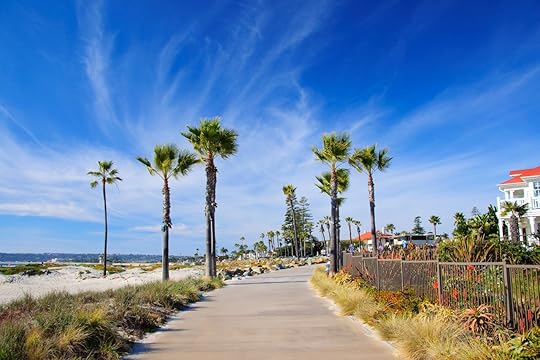
Photo: Feoktistoff/Shutterstock
The year-round balmy weather and Discover Bike cycle-share program make San Diego an ideal city to explore by bike. You can choose from a multitude of adventures, most of them on designated bike and multi-use paths that run just about everywhere you might want to visit — from downtown Embarcadero to beaches and parks.
If you want a longer ride, you can cruise the Pacific Coast Highway. For a more laid-back option, the “Silver Strand” is an easy 10-mile portion of the Bayshore Bikeway stretching from Coronado to Imperial Beach. This route parallels the beach along San Diego Bay, considered by many the most beautiful bike route in Southern California. Balboa Park is another popular option with trails throughout the park leading to the San Diego Air and Space Museum, Japanese Friendship Garden, and the Botanical Building, a stunning flower and plant conservatory that was built a century ago. 

More like this: The 7 most epic bike tours around the world
The post 7 US cities that are best explored by bike appeared first on Matador Network.

Matador Network's Blog
- Matador Network's profile
- 6 followers



